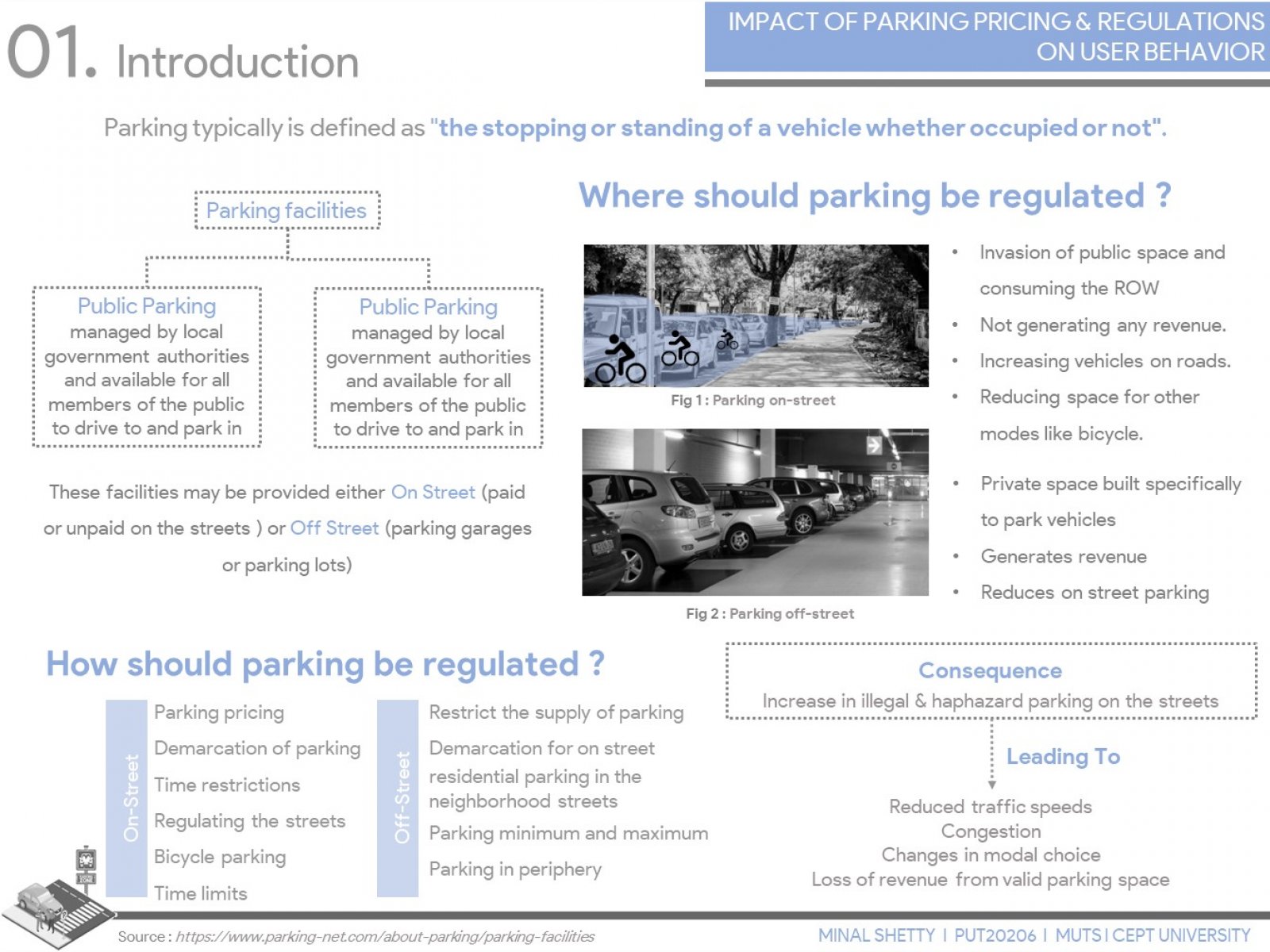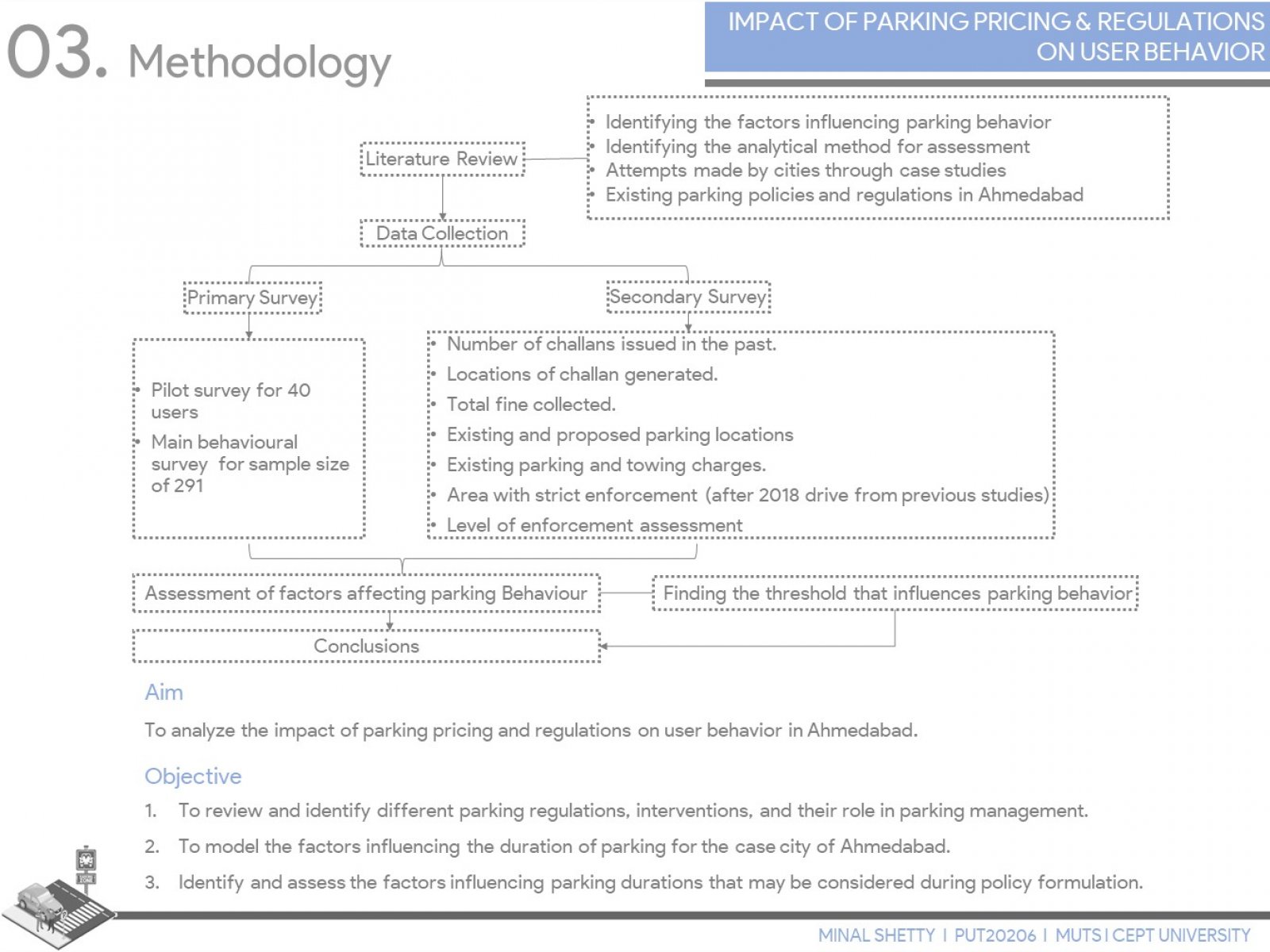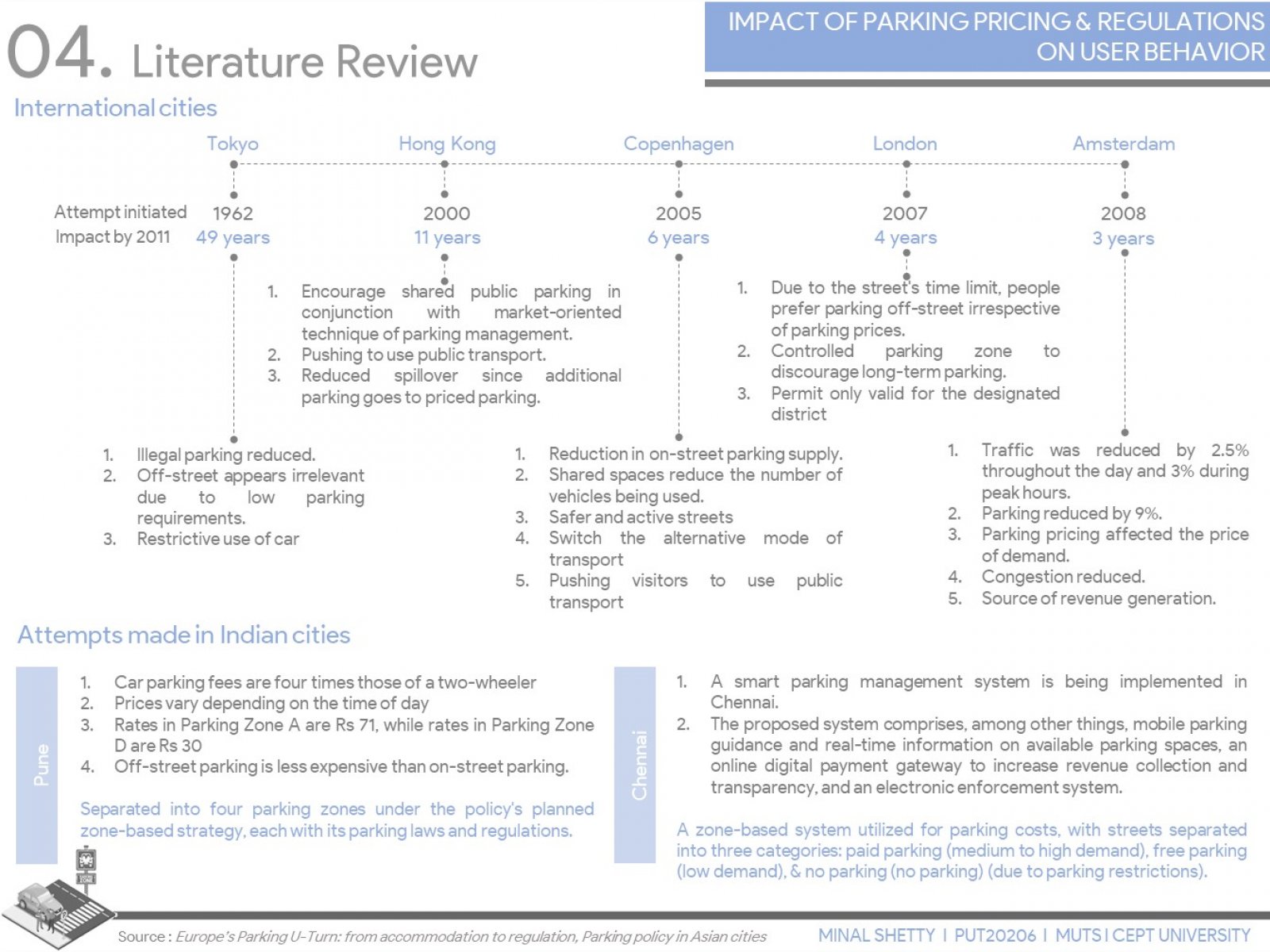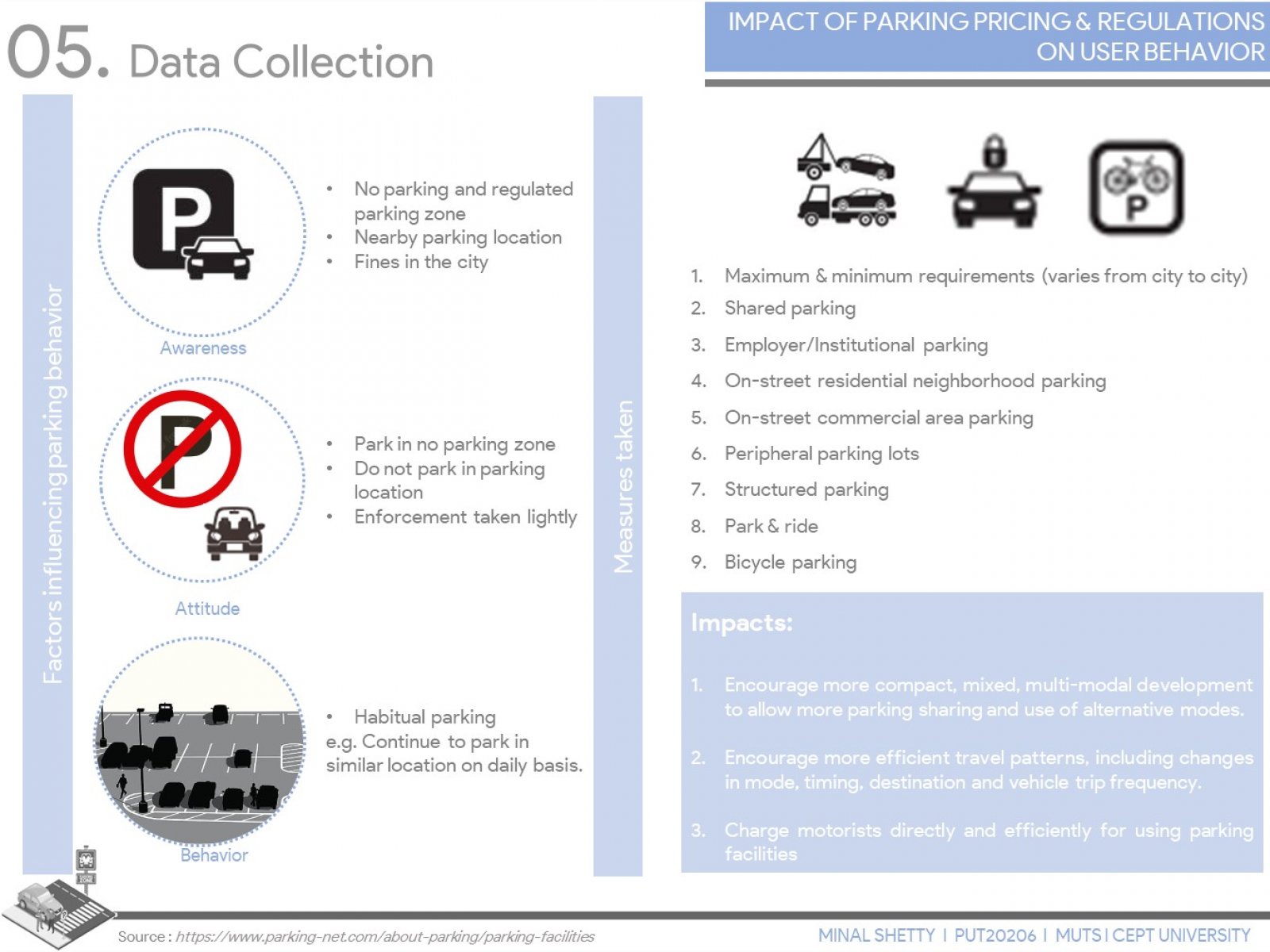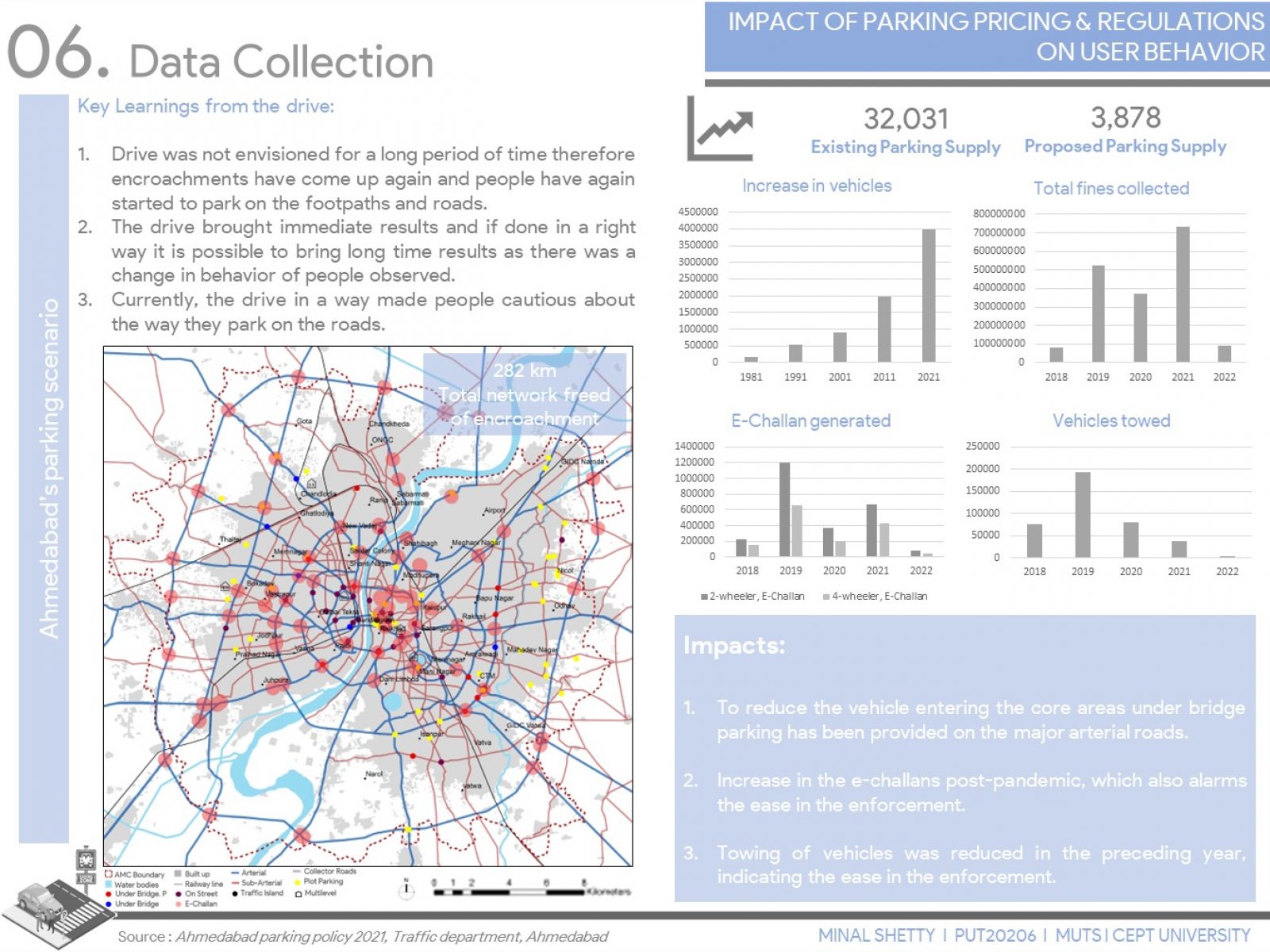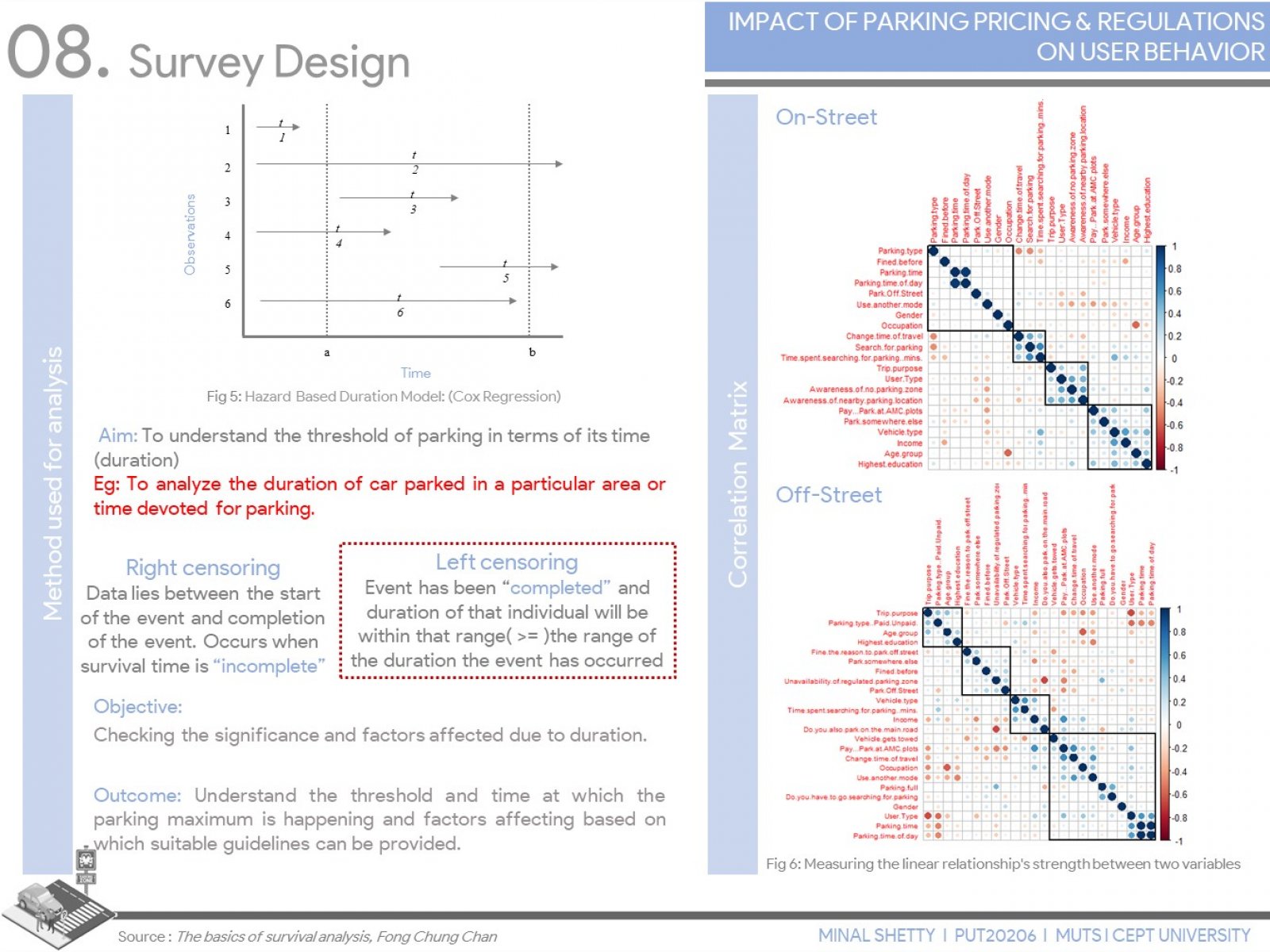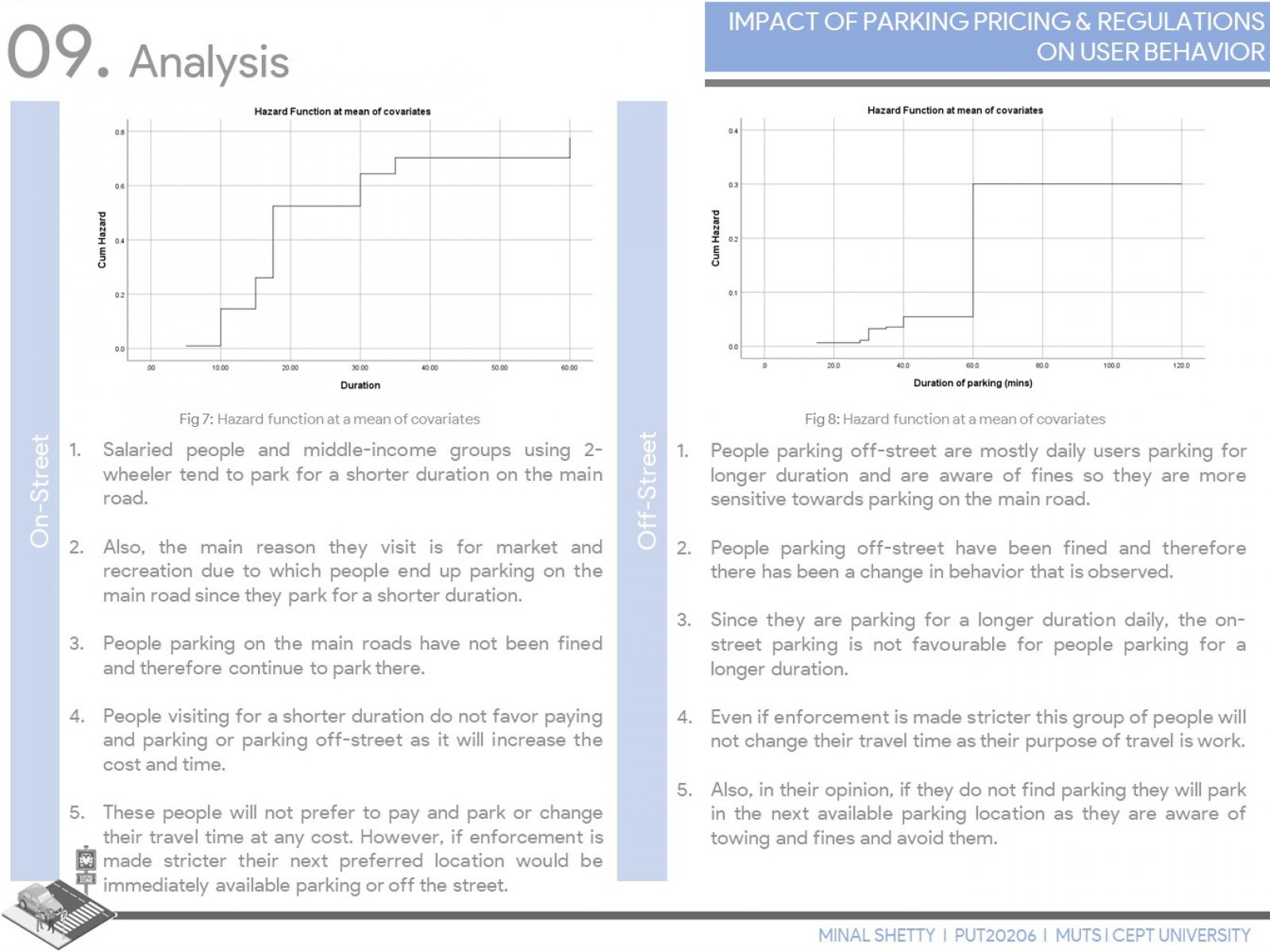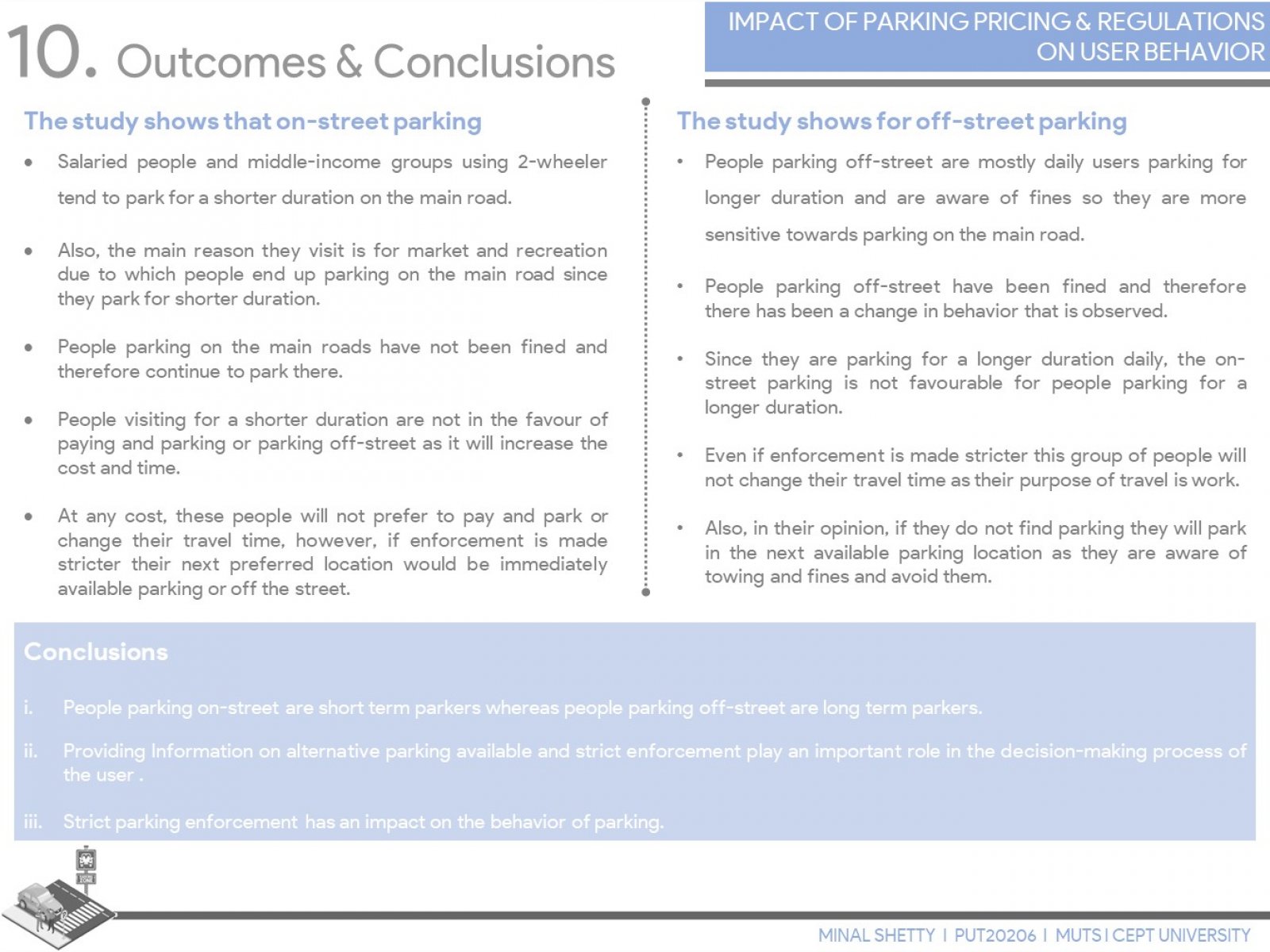Your browser is out-of-date!
For a richer surfing experience on our website, please update your browser. Update my browser now!
For a richer surfing experience on our website, please update your browser. Update my browser now!
Indian cities are witnessing a spurt in urban growth, increasing mobility demand, and vehicular ownership. With this increasing number, the need to regulate them becomes the utmost priority; else, the demand will keep increasing, and we will not be able to meet this increasing demand. This justifies the need for proper parking regulation and management. However, at the same time, it is also important to understand the user’s attitude towards parking to develop policies that would sustain and give better long-term results. This study aims to analyze the user’s attitude at the time of parking and its implications for users taking Ahmedabad as a case city. The key objectives are to investigate the impact of different parking regulations on user behavior and understand the various push measures that would impact user behavior differently. For this purpose, the questionnaires were prepared based on various literature reviews done to understand how they had studied user behavior and the kind of impacts it made. The expected outcomes were used to identify the threshold for parking duration (time the vehicle was parked), which will be a guiding principle for policymakers. The study area was delineated based on the high parking demand in the city, for which a random sampling of 291 drivers was carried out for seven days at different hours of the day. Users' perceptions were captured through a pretested, validated, and self-administered questionnaire. Documentation of previously done study and consultation with authorities to understand the initiatives taken for the same. To support the study, descriptive statistics and duration analysis were done to understand each variable's significance, like the socio-economic characteristics, attitude, and behavior on parking duration. The results have shown that strict parking enforcement has an impact on the behavior of parking of short-term and long-term parkers. In conclusion, the overall study highlights the strong predictors of user attitude and behavior that can assist the policy developers in better policy formulation.
